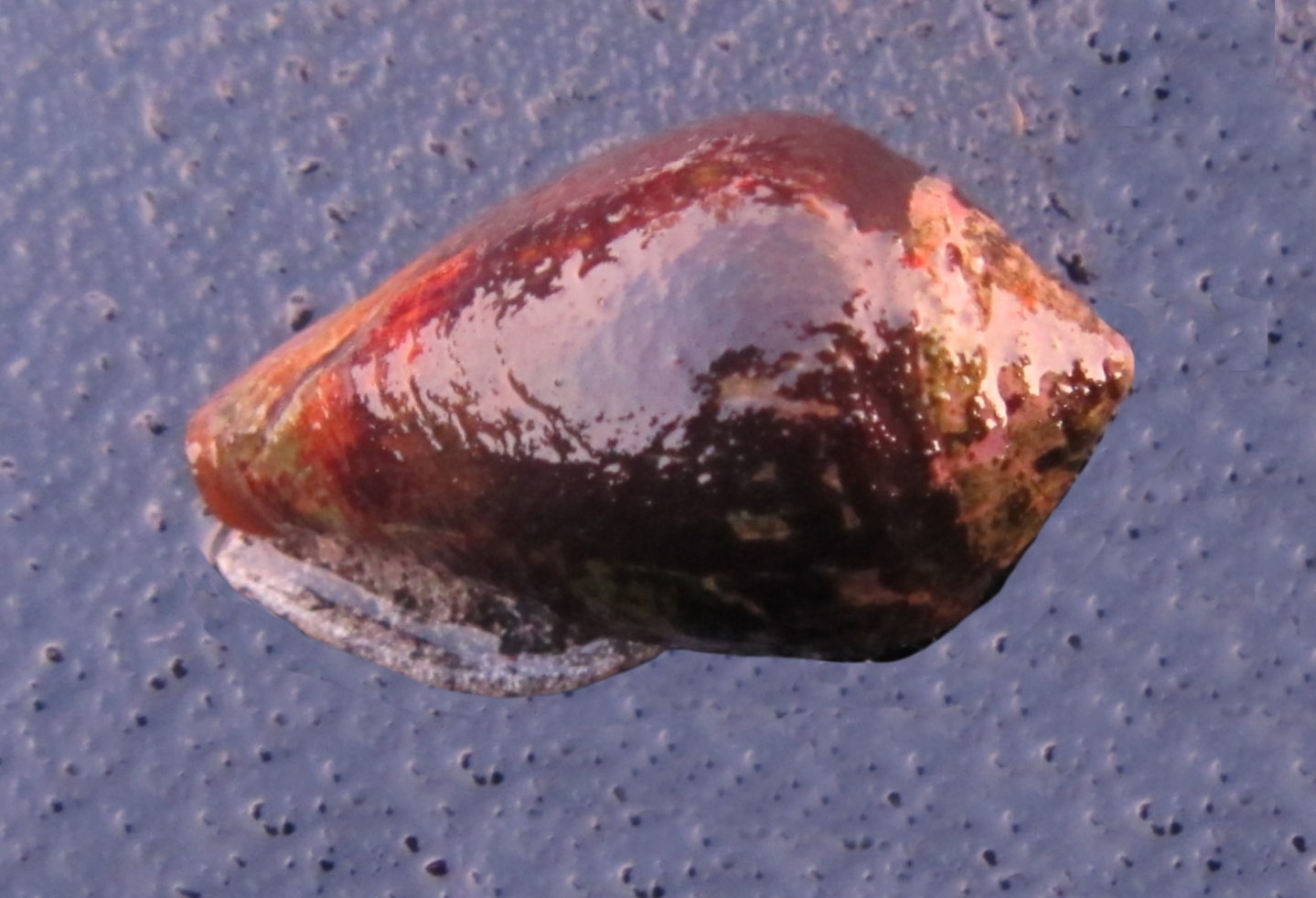California Cone Shell, Californiconus californicus
 California Cone Shell, Californiconus californicus. Underwater photograph taken in coastal waters off San Diego, San Diego, California. Size: 4.2 cm (1.7 inches) x 1.9 cm (0.8 inches). Photograph and identification courtesy of Bob Hillis, Ivins, Utah.
California Cone Shell, Californiconus californicus. Underwater photograph taken in coastal waters off San Diego, San Diego, California. Size: 4.2 cm (1.7 inches) x 1.9 cm (0.8 inches). Photograph and identification courtesy of Bob Hillis, Ivins, Utah.
 California Cone Shell, Californiconus californicus. Shell collected off the beach in the greater San Diego area, San Diego, California, March 2015. Size: 4.2 cm (1.7 inches) x 1.9 cm (0.8 inches). Photograph and identification courtesy of Bob Hillis, Ivins, Utah.
California Cone Shell, Californiconus californicus. Shell collected off the beach in the greater San Diego area, San Diego, California, March 2015. Size: 4.2 cm (1.7 inches) x 1.9 cm (0.8 inches). Photograph and identification courtesy of Bob Hillis, Ivins, Utah.
Phylogeny: The California Cone, Californiconus californicus (Reeve, 1844), is a gastropod mollusk that is a member of the Conidae Family of Cones. The genus Californiconus is one of eight genera in this family, and this is the only species in this genus. They are known in Mexico as Cono de California.
Description: The California Cone shell has an elevated, flat sided, spire with a rounded shoulder. The aperture grows wider at the anterior end. The exterior of the shell is dull gray or tan in color; live shells have a thick auburn or dark brown periostracum; the aperture is white. California Cone shells reach a maximum of 4.9 cm (1.9 inches) in length and 2.2 cm (0.9 inches) in height.
Habitat and Distribution: California Cones are found in tide pools, on rock reefs, in cobbles, and within sand substrates. They live from the intertidal zone to depths up to 46 m (150 feet). They are a temperate Eastern Pacific species. In Mexican waters they have a limited range, from the northern border to Magdalena Bay, Baja California Sur. There is one record from the La Paz area within the Sea of Cortez.
Ecology and Behavior: California Cones are predatory generalists that feed on fish, octopuses, polychaetes, shrimp, and other mollusks. They are also scavengers that feed on carrion. They are gonochoric and reproduce sexually. There is no mention in the available literature of them engaging in any types of parasitic, commensal, or symbiotic relationships. From a conservation perspective they are consider to be of Least Concern.
Synonyms: Conus californicus, Conus californicus var. fossilus, and Conus ravus.